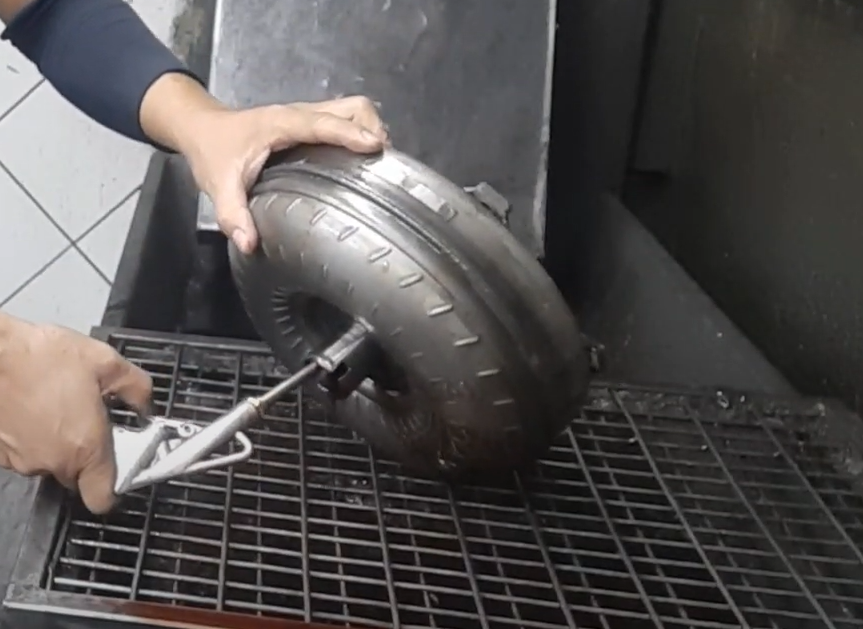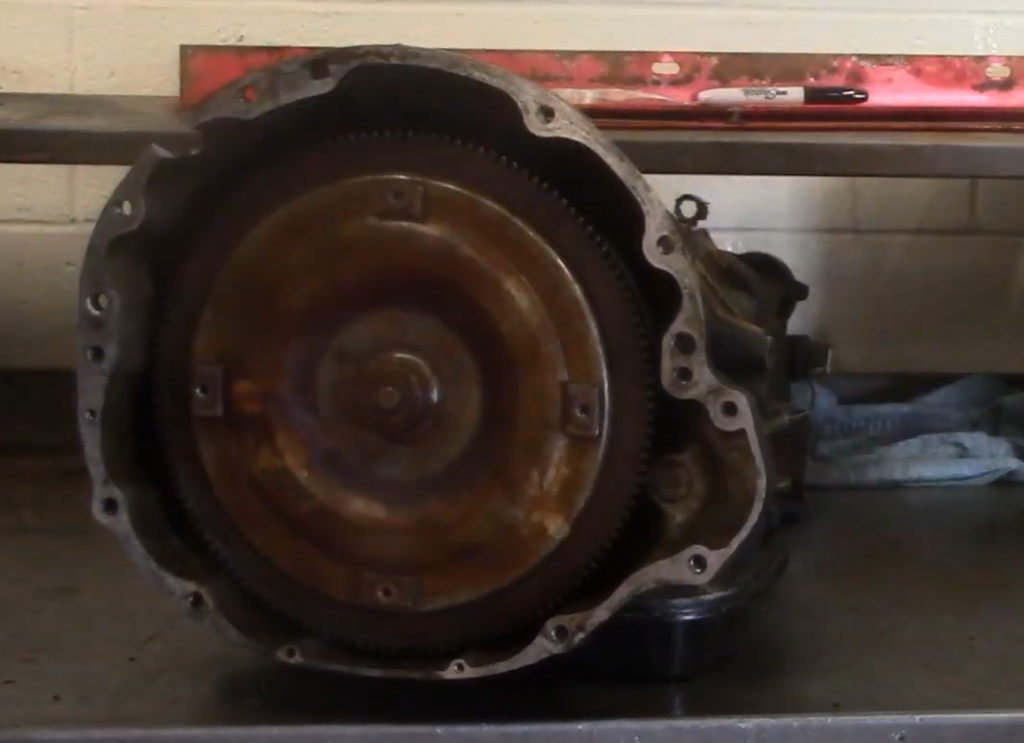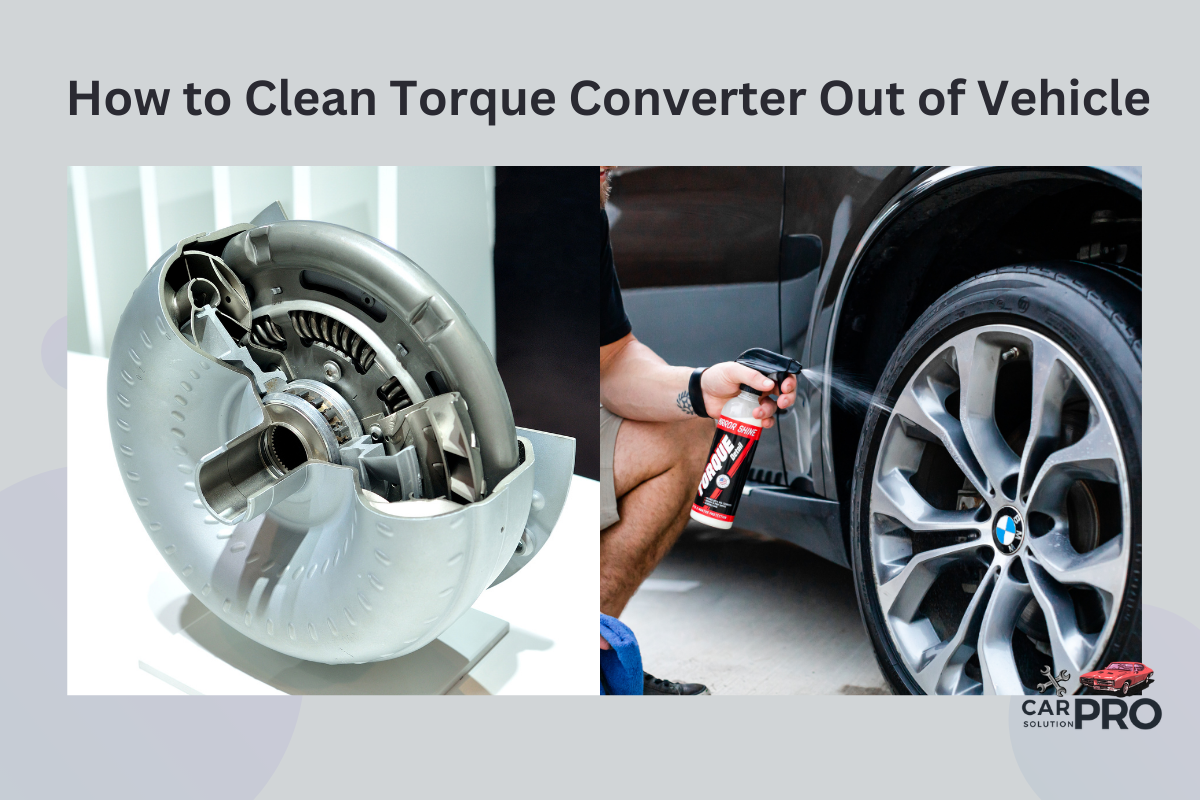Cleaning a torque converter is a crucial task for maintaining your vehicle’s transmission system. It helps prevent issues like slipping gears and poor fuel economy. To clean a torque converter out of a vehicle, you’ll need to drain the transmission fluid, remove the converter, and flush it with a cleaning solvent.
This process requires some mechanical knowledge and special tools. It’s important to follow safety guidelines and prepare your workspace before starting. Many car owners choose to have this job done by a professional mechanic due to its complexity.
A clean torque converter can improve your vehicle’s performance and extend the life of your transmission. Regular maintenance, including cleaning the torque converter, can save you money on costly repairs down the road.
Key Takeaways
- Cleaning the torque converter improves vehicle performance and transmission longevity
- The process involves draining fluid, removing the converter, and flushing with solvent
- Safety precautions and proper tools are essential for this complex maintenance task
Safety and Preparation
Cleaning a torque converter requires careful safety measures and proper workspace setup. Taking the right precautions protects you from harm and ensures a smooth cleaning process.
Personal Safety Gear
Wear safety glasses to shield your eyes from debris and fluids. Use chemical-resistant gloves to protect your hands from harsh cleaning agents and transmission fluid. Put on closed-toe shoes with non-slip soles for stability.
Don a long-sleeved shirt and pants to cover your skin. Consider wearing a face mask to avoid inhaling fumes. Keep a first aid kit nearby for any emergencies.
Workspace Preparation
Choose a well-ventilated area, ideally outdoors or in a garage with open doors. Spread a large tarp or cardboard on the ground to catch spills. Place absorbent materials like cat litter nearby to soak up any leaks.
Gather all necessary tools before starting. This includes wrenches, sockets, and a drain pan. Set up bright lighting to see clearly. Keep a fire extinguisher within reach as a precaution.
Clean your workspace of any tripping hazards. Store flammable materials away from the work area. Have a phone nearby to call for help if needed.
Tools and Materials
Cleaning a torque converter requires specific tools and materials. Having the right equipment ensures a smooth and effective cleaning process.
Required Tools
To clean a torque converter, you’ll need several essential tools. A socket set is crucial for removing bolts and accessing the torque converter. A drain pan is necessary to catch any fluids during the cleaning process.
A funnel helps pour cleaning solutions and new transmission fluid. Pliers and screwdrivers assist in removing smaller components. Safety glasses and gloves protect you from harmful chemicals and debris.
A torque wrench ensures proper tightening of bolts during reassembly. Clean rags or towels are useful for wiping surfaces and parts.
Cleaning Solvents and Materials
Choosing the right cleaning materials is key to effectively cleaning the torque converter. A torque converter cleaner is specifically designed for this task and should be your primary cleaning agent.
Degreaser helps remove stubborn grime and oil buildup. Brake cleaner can be used for precision cleaning of smaller parts. A parts cleaning brush aids in scrubbing hard-to-reach areas.
New transmission fluid is essential for refilling the system after cleaning. Make sure to use the correct type for your vehicle. A parts cleaning tray provides a clean surface for organizing and cleaning components.
Removal of the Torque Converter

Taking out a torque converter requires careful steps and proper tools. The process involves accessing the transmission and disconnecting the converter safely.
Accessing the Transmission
To reach the torque converter, you need to get under the vehicle. Use a car lift or jack stands to raise the car safely. Make sure the vehicle is secure before crawling underneath.
Remove the transmission fluid pan. This step lets you drain the fluid and see the torque converter. Unscrew the bolts holding the pan in place. Have a drain pan ready to catch the fluid.
Take off any shields or covers blocking access to the torque converter. These parts may vary by vehicle model. Check your car’s manual for specific locations.
Disconnecting the Torque Converter
Look for the bolts connecting the torque converter to the flexplate. These are usually found through an opening in the converter housing. You may need to rotate the engine to see all the bolts.
Use the right size socket wrench to remove these bolts. Be careful not to drop them into the transmission. Count the bolts to ensure you remove them all.
After removing the bolts, the torque converter should be free. Gently pull it away from the transmission. It might be heavy, so be prepared to support its weight.
Place the converter on a clean surface. Inspect it for any visible damage or wear. This is a good time to check for signs that might have caused transmission issues.
Cleaning Procedures
Cleaning a torque converter involves several key steps to ensure thorough removal of debris and contaminants. The process requires careful attention to detail and proper techniques.
Initial Flushing
Begin by draining the transmission fluid. Place a large drain pan under the transmission pan and remove the pan bolts. Let the fluid drain completely.
Remove the transmission pan and clean it thoroughly. Use a degreaser and a lint-free cloth to wipe away any dirt or debris.
Replace the transmission filter. This step is crucial for preventing contaminants from circulating back into the system.
Refill the transmission with new fluid. Use the type recommended by your vehicle manufacturer.
Start the engine and let it run for a few minutes. This allows the new fluid to circulate through the system.
Detailed Cleaning
Remove the torque converter from the transmission. This step may require special tools and expertise.
Inspect the converter for visible damage or wear. Look for cracks, dents, or signs of excessive heat.
Use a parts washer or solvent bath to clean the exterior of the converter. Scrub gently with a soft brush to remove stubborn grime.
For internal cleaning, use a torque converter flush machine if available. This equipment circulates cleaning solution through the converter, removing built-up deposits.
If a flush machine is not available, manually flush the converter with cleaning solution. Rotate the converter to ensure thorough cleaning of all internal components.
Inspection and Drying
After cleaning, carefully inspect the torque converter again. Check for any remaining debris or signs of damage that may have been hidden by dirt.
Use compressed air to blow out any remaining cleaning solution or moisture. Be thorough, as leftover liquid can cause issues when the converter is reinstalled.
Allow the converter to air dry completely. This prevents contamination of the transmission fluid when reassembled.
Check all seals and gaskets associated with the torque converter. Replace any that show signs of wear or damage.
Before reinstallation, apply a light coat of transmission fluid to the converter’s pump drive hub. This helps ensure smooth operation upon startup.
Reassembly and Testing
After cleaning the torque converter, it’s time to put everything back together and make sure it works properly. This process involves careful reinstallation, refilling fluids, and testing performance.
Reinstalling the Torque Converter

Start by carefully placing the cleaned torque converter back into the transmission. Line up the converter’s input shaft with the transmission pump. Gently rotate the converter until it slides into place. Make sure it’s fully seated.
Next, reattach the transmission to the engine. This step requires precision to avoid damaging components. Use a jack to raise the transmission into position. Bolt it securely to the engine block.
Reconnect all removed parts in reverse order of disassembly. This includes the starter motor, transmission lines, and electrical connections. Double-check all bolts are tight.
Reconnection and Refilling
Reattach the driveshaft to the transmission output shaft. Secure it with new bolts if needed. Reconnect the exhaust system and tighten all clamps.
Now it’s time to refill the transmission fluid. Use the correct type and amount of fluid specified in your vehicle’s manual. Pour it slowly through a funnel into the transmission dipstick tube.
Start the engine and let it run for a few minutes. This helps circulate the new fluid. Check for leaks around all connections. Top up the fluid if needed.
Performance Testing
Take the vehicle for a test drive to check the torque converter’s performance. Start with slow speeds and gradually increase. Pay attention to how the transmission shifts.
Listen for unusual noises during acceleration and deceleration. Feel for any vibrations or slipping sensations. The vehicle should accelerate smoothly without hesitation.
Check the transmission fluid again after the test drive. Make sure it’s at the correct level and hasn’t changed color. If everything seems normal, your torque converter cleaning was successful.
Frequently Asked Questions
Cleaning a torque converter requires specific techniques and considerations. The following questions address key aspects of the process, from methods and costs to identifying issues and resolving common problems.
What is the best method for cleaning a torque converter without a drain plug?
To clean a torque converter without a drain plug, mechanics often use a flushing method. This involves circulating cleaning fluid through the transmission system to remove contaminants.
The process typically requires connecting a transmission flush machine to the vehicle’s transmission lines. This allows the old fluid to be replaced with fresh fluid, effectively cleaning the torque converter.
Can you effectively clean a torque converter at home, and if so, how?
Cleaning a torque converter at home is possible but challenging. It requires some mechanical knowledge and specific tools.
The basic steps involve removing the torque converter, draining the fluid, and cleaning it with a suitable solvent. After cleaning, it must be carefully reinstalled and refilled with new transmission fluid.
What are the estimated costs associated with cleaning a torque converter out of a vehicle?
The cost of cleaning a torque converter varies depending on the vehicle make and model. It also depends on whether the work is done professionally or as a DIY project.
Professional services typically range from $150 to $500. DIY costs are lower but require time and effort.
Is it possible to flush a torque converter using mineral spirits, and what are the risks?
Using mineral spirits to flush a torque converter is not recommended. It can damage seals and other components in the transmission system.
The risks include potential leaks, transmission failure, and voiding the vehicle’s warranty. It’s safer to use approved transmission fluids and cleaning solutions.
How can you tell if a torque converter needs reconditioning, and can it be done by the vehicle owner?
Signs that a torque converter needs reconditioning include slipping out of gear, unusual noises, and poor acceleration. Shuddering or vibration during acceleration can also indicate issues.
While vehicle owners can identify these symptoms, reconditioning a torque converter typically requires professional expertise and specialized equipment.
What steps should be taken to resolve a torque converter shudder?
To resolve a torque converter shudder, start by checking the transmission fluid level and condition. If the fluid is low or dirty, a transmission flush may resolve the issue.
If the problem persists, it may indicate worn internal components. In this case, professional inspection and potential replacement of the torque converter might be necessary.


